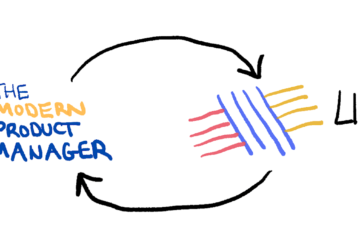Starting out as a Product Manager, there will be a lot to soak in. It might be daunting. It might be nerve-wracking.
But you probably didn’t break into PM thinking that it’s easy (at least I hope you didn’t). It would have been far better to have found at least some kind of alignment with your role, your team, and your company. What were all those interviews for?
That’s the beauty of onboarding. Jumping into the pool with others is an opportunity as well as a challenge. Unless you’re taking on an “octopus” role that requires you to dive into creating the product (i.e. startup founder, technical PM with engineering chops, or product designer), chances are you’ll be part of a product team for a specific feature — with designers and engineers.
When I joined the SIDE PRJCT accelerator program, I hit the ground running with two designers over a single prompt: cyberbullying. We were all fresh from intensive learning programs, and I was SO relieved to be working with them in not only researching but ideating together. We could divide and conquer with our different points of view.
I brought structure and prioritization to our product building process, and my teammates created awesome wireframes and visual guides that facilitated our discussions. Aligned by a customer-centric mission, we amplified each other’s work.
Then, we welcomed our engineers, who’d turn our feature wishes into code. Onboarding them early was key to our success given the rapid turnaround for a demo under the program.
Needless to say, the more aligned we were (PM, designers, and engineers), the far better off we were in moving towards an impactful product for the user.
Here are a few lessons that I want to share with you based on my experience.
- BE TRANSPARENT AND INCLUSIVE. Good engineers and designers don’t want to butt heads for the sake of butting heads. As a product team, you need to get somewhere together! In that light, sharing creative decisions as well as feedback from both sides can help build a collective understanding of where the product’s heading. Keeping one party in the dark will bite you in the future. Also, including designers and engineers in customer interviews from time to time also helps your case when you need to justify why “Task X” should be added to their plate. Users are direct proof!
- BE COMMUNICATIVE. It’s better to over-communicate than under-communicate with your creative partners. On a deeper level, interact with your partners and get a feel for how you can make their lives easier and what makes them work more efficiently.
Bonus round: Get a feel for how they tick. Being a PM can be like acting as a translator at the UN: you need to efficiently convey messages in whichever “language” that’s familiar to the engineer/designer. One misstep, and it could be war (or friction). Usually, the more you invest in your creative team, the more goodwill you build, so help them help you! Build trust. - BE A CREATIVE CONDUCTOR. The earlier you realize that you’re not the direct creator, the better. Think of yourself as the mover and shaker behind the scenes.
As the direct link to the Voice of the Customer, you’re fighting for your users first and foremost. You’re prioritizing features and tasks for them when it comes down to it. However, engineers and designers have very specific skills. Instead of micromanaging every single step of the way, give them room to thrive in their own creativity to express these skills and come up with workarounds as technical limits come up. Acting as a “creative conductor” may lead you to an even better MVP.
So you really can’t be a one-man wolfpack.

I love sneaking pop culture into my content whenever I can, and this is a conclusion that’s been brewing ever since the beginning of my foray into PM: the Product Manager is the Avatar (from Avatar: The Last Airbender).
Let me explain.
The Avatar is supposed to be the bridge between the physical world and the spiritual world, seamlessly bending all the elements to achieve harmony and balance.
Put it this way: the elements are your stakeholders. You’ll hear time and time again that you’re NOT a mini-CEO, and that’s 100% true. You’re not. You’re there to influence, to search for ways to get buy-in.
When everyone’s in alignment, you have a clear green light.
One step further, the spiritual world is the Voice of the Customer — your user’s needs, “work” flows, pain points, and desired outcomes (which you might need to decode).
The physical world is your actual product, the portal that gets your user from Point A (where they are now) to Point B (where they need to be to address their needs).



0 Comments